
A mystery photo album has fallen into my hands. One that has raised many questions and set a difficult puzzle. No doubt Puffins can help me solve the enigma. But for the moment, let’s allow ourselves to be distracted by the middle section of the near 100-year-old Photex Expandable – where the train photos are.
Last time, we established that these images immortalised the cavalcade held to commemorate the centenary of the Stockton and Darlington Railway. Held in July 1925, the future King and Queen, still the Duke and Duchess of York, were in attendance. We shall begin from where we left off with, for ease of presentation, the images shown in album order rather than procession on the day order.
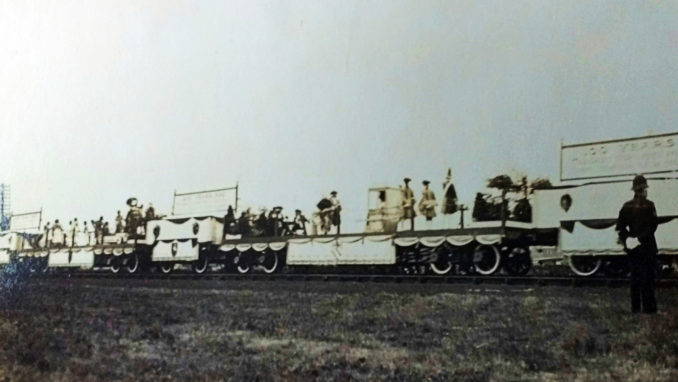
Railways Wonders of the World’s contemporaneous feature described a tableaux train thus;
The tableaux consisted of six wagons each carrying a separate “picture”. The first was allegorical and depicted a number of astrologers grouped at one side of a symbolic wheel, with a scene showing modern engineering practice on the other. The two scenes were joined through the spokes of the wheel by a huge chain, representing the links of time.
The second tableaux is featured in our top photograph and shows prehistoric men just about to invent the wheel as they use tree trunks as rollers. The reader will have to use their imagination regarding the ‘Pharaohs on a wheeled platform being drawn by slaves’. Unfortunately, our second photograph appears to show the giant step backwards taken when the wheel and axle was discarded and replaced by the sedan chair.
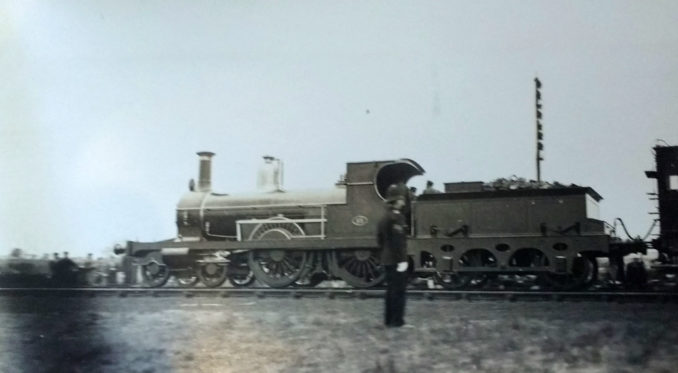
Hauling the tableaux train was No.45A, a 4-4-0 built by Neilson & Co, of Glasgow in 1885. According to the LNER Encyclopedia:
No. 45A was repainted in GNSR green and took part in the Stockton & Darlington Centenary celebrations. It was withdrawn on 31st July 1925 shortly after its return. There was some talk of preservation, and it was temporarily employed as a shunter at the Inverurie Works. However, this was not to be, and No. 45A was scrapped soon afterwards.
Originally, 45A had been one of six Neilson & Co Class L engines built for the Great North of Scotland Railway. The GNSR’s geographic footprint extended from Aberdeen to the extremities of Fraserburgh, Ballater, Boat of Garten and Lossiemouth. At these four locations, it respectively connected with the sea, empty countryside, the Highland Railway and more sea.
At grouping, the GNSR became part of the LNER. Previously mixed traffic locomotives (used for passenger and freight duties) on main lines and branch lines, the Class L’s were unloved by their new owners and had all met the torch before 45A.
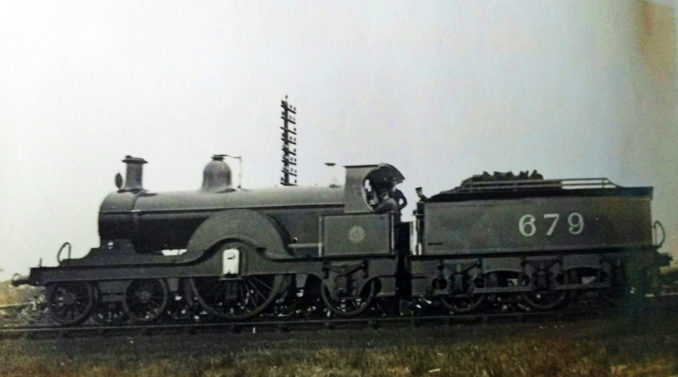
Following the tableaux train, the next photographed exhibit is a Midland Railway 115 Class 4-2-2. Fifteen of these ‘Spinners’ were built at Derby Works to a Samuel Waite Johnson design between 1896 and 1899. They were capable of 90 mph and were used on Midland expresses, double-heading on heaver trains. No.679 was withdrawn in 1928. Sister No.673 has survived into preservation and is at the National Railway Museum in York.
Our mystery photographer’s attempt doesn’t do No.679 justice. Another photograph from the event shows her gleaming.
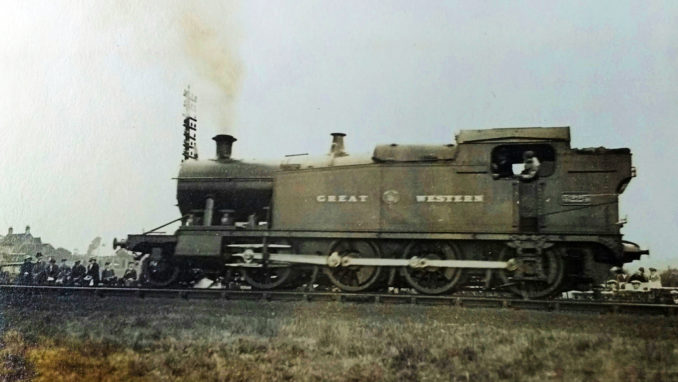
In the previous section, old locomotives already of historical interest were being displayed. For that reason, many have survived in preservation. From now on, some exhibits are being shown off because they were new in the mid-1920s. Therefore, please be warned these are far more likely to have subsequently met the cutter’s torch than the tourist’s camera.
The above is a Great Western Railways class 5205 2-8-0T heavy tank engine. These were built across a period of twenty-seven years with the first being outshopped from Swindon works in 1923 and the last during wartime.

I am grateful to the Preserved British Steam Locomotives website for informing us Britain’s first 4-4-2 locomotive, 3990, was built in Doncaster in 1898 at a cost of £2,522 and was the only locomotive on the Great Northern Railway to carry a name – Henry Oakley. It was withdrawn in 1937 after working 1,296,000 miles in 39 years. Shortly after withdrawal, she was displayed in York’s LNER museum and later preserved at the National Railway Museum, also at York. In 1975 she was put back into steam for the 150th anniversary of the Stockton and Darlington Railway.
No.3990, originally a GNR C1 was reclassified as an LNER C2 upon grouping.
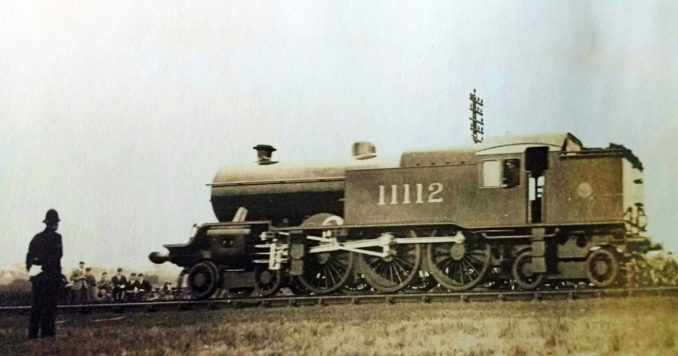
No.11112 was one of a class of ten Hughes 4-6-4T tank engines built at Horwich Works. Lancashire and Yorkshire Railway Company engines, they went to the LMS upon grouping. Not particularly successful, all had gone by 1942. No.11112 was withdrawn in 1938 after only 14 years in service. Nicknamed Dreadnaughts, Railway Wonders calls them ‘Baltics’. Why so? Baltic refers to the 4-6-4 wheel configuration. This system of categorising steam engines by wheel formation is known as the ‘Whyte notation’, Frederick Methvan Whyte being its instigator.
According to wiki,
The notation in its basic form counts the number of leading wheels, then the number of driving wheels, and finally the number of trailing wheels, numbers being separated by dashes.
So where does the name ‘Baltic’ come from? The configurations have names as well as numbers. A 4-4-2 is an Atlantic, a 2-6-0 a Mogul, a 4-6-2 is a Pacific and a 4-6-4 such as Baltic No.11112 is a Hudson. Confused? Yes, they have different names in different places. 4-6-4’s are known as Hudsons in America but Baltics in Britain. Where do the names come from? Often from the place or railway company that the design was first built for. 4-6-4’s for St Petersburg on the Baltic, Pacifics for the Missouri Pacific Railroad. The first Mikados were so-called as they were exported from Pennsylvania’s Baldwin Locomotive Works to Japan.
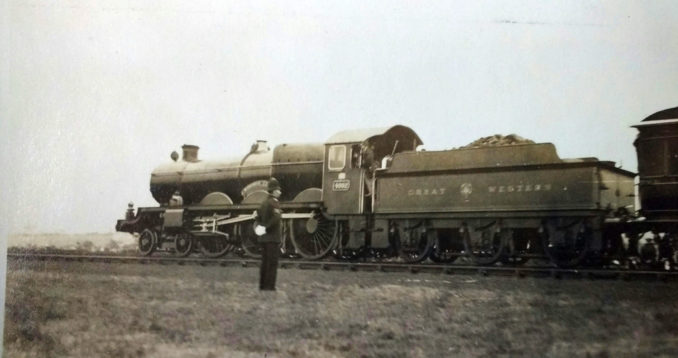
The Great Western Railway built 171 Castle Class locomotives between 1923 and 1950 at their Swindon Works to a design by Charles Collett. Above, a brand new 4082 Windsor Castle is pictured appropriate to the presence at the cavalcade of the Duke of Duchess of York. Unbeknown at the time, the Duke and Duchess would become King George VI and Queen Elizabeth eleven years later upon the abdication of Edward VIII, the Duke’s elder brother.
Upon King George VI’s death in 1952, Windsor Castle hauled his funeral train from Wolferton station, near Sandringham, for the 93 miles to London King’s Cross. However, it was a different engine, the nameplates having been swapped with the much newer 7013 Bristol Castle.
4082 was withdrawn in 1964. A successful class, eight are in preservation, depending upon how you classify the re-builds.

No.9902 Highland Chief was built in 1911, improved and re-classified in 1923 and withdrawn in 1936. Originally known as the ‘North British Atlantic’, these engines were designed by William P Reid and built by the North British Locomotive Company and Robert Stephenson and Company. They were the longest, heaviest and most powerful engines ever used by the North British, and were built to compete with the Caledonian Railway’s routes north of the border. Upon the grouping of the railways, they became part of the LNER.
No.9902’s 1923 reclassification refers to its upgrade from a saturated to a superheated boiler. Superheating is a way of passing steam through the boiler repeatedly and in doing so reducing water and fuel consumption.

Although pictured at the start of the celebrations in our mystery album, in reality Locomotive No.1 and its train of replica 1825 coal wagons were at the end of the gala. Presumably to stop it from blocking the whole procession if it broke down. Built by Robert Stephenson and Company it was the first steam locomotive to pull a passenger carrying train on a public railway.
As there was a shortage of railway lines in those days, the locomotive had to be delivered to the Stockton and Darlington railway via horse and cart and then assembled on the track.

In the middle of the formation is a replica of what in 1825 was the world’s only passenger coach. As the train approached the VIP grandstand, disaster almost struck. As Railway Wonders of the World describes,
It had been arranged that the train should stop for a few moments near the grandstand and that the band should provide a musical interlude. As the old “Locomotion” drew near, emitting clouds of black smoke from its tall funnel and covering the be-ribboned lady passengers with soot and dirt, it came to such a sudden halt that the wagons clashed together and the occupants were thrown violently forward. They clutched wildly at each other in a vain endeavour to support themselves, and even the “Directors” in “the long coach belonging to the Company” looked extremely alarmed as they were jostled to one end of the coach in a confused heap. Sorting themselves out, however, the bandsmen collected enough breath to strike up “Auld Lang Syne”, which was rendered to the accompaniment of tumultuous and prolonged cheering. As the strains of the famous old tune rang out, the Duke and Duchess and the other guests rose to their feet and heads were bared until the veteran engine departed.

As we bid farewell to this part of the cavalcade it’s worth noting that, as can be seen clearly in many of the above photographs, a crowd estimated by Railway Wonders to be in excess of a quarter of a million (and strung out along twelve miles of railway line), was controlled by one sergeant who spent the day ignoring the masses and watching the engines.
Different times.
In the next instalment of Mystery Album, two more locomotive photographs tell a fascinating industrial and human story worthy of close examination.
© Text and photographs Always Worth Saying 2021
The Goodnight Vienna Audio file



